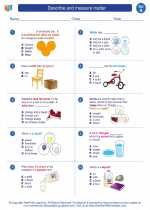Golgi Apparatus
The Golgi apparatus, also called the Golgi complex, is an organelle found in eukaryotic cells. It was first discovered by Italian physician Camillo Golgi in 1898. The Golgi apparatus plays a key role in processing and packaging proteins and lipids produced by the endoplasmic reticulum.
Structure of Golgi Apparatus
The Golgi apparatus is composed of a series of flattened membrane-bound sacs called cisternae. These cisternae are stacked on top of each other, resembling a stack of pancakes. Each stack of cisternae has a distinct polarity, with a cis face (forming face) and a trans face (maturing face).
Functions of Golgi Apparatus
- Protein Modification: The Golgi apparatus modifies proteins by adding carbohydrate chains (glycosylation) and other functional groups to them. This modification is essential for the proper functioning of proteins in the cell.
- Protein Sorting: It sorts and packages proteins into vesicles for transport to their final destination, either within the cell or outside of the cell.
- Lipid Processing: The Golgi apparatus also plays a role in modifying and sorting lipids produced by the endoplasmic reticulum.
- Formation of Lysosomes: It is involved in the formation of lysosomes, which are organelles containing digestive enzymes.
Study Guide
Here are some key points to remember about the Golgi apparatus:
- What is the structure of the Golgi apparatus?
- What are the functions of the Golgi apparatus?
- How does the Golgi apparatus modify proteins?
- Why is protein sorting important for the cell?
- What is the role of the Golgi apparatus in the formation of lysosomes?
Understanding the structure and functions of the Golgi apparatus is important for comprehending the processes of protein and lipid trafficking within the cell.
.◂Science Worksheets and Study Guides First Grade. Describe and measure matter

 Worksheet/Answer key
Worksheet/Answer key
 Worksheet/Answer key
Worksheet/Answer key
 Worksheet/Answer key
Worksheet/Answer key
 Vocabulary/Answer key
Vocabulary/Answer key
 Vocabulary/Answer key
Vocabulary/Answer key
